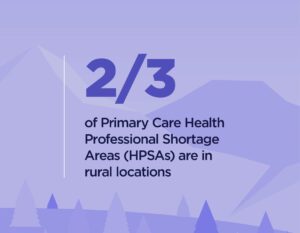Article
Rural hospitals, we hear you: Ambient listening AI is here
New artificial intelligence (AI) solutions are flooding the market, and it can be overwhelming for healthcare leaders to know where to begin. At Altera Digital Health, we have been advising clients to start somewhere today, rather than fall behind. In an era when every minute of clinician time and every dollar counts, finding efficient, low-friction solutions isn’t just an advantage; it’s a necessity for survival and growth, particularly in our vital rural communities.
Ambient listening AI is that steppingstone for many. This technology automates tedious aspects of clinical documentation, capturing patient-provider interactions and generating structured data within the electronic health record (EHR) from the insights gathered. Because ambient listening augments providers instead of replacing them, it is a lower risk use-case with promising early results.
Though a range of healthcare organizations can benefit from ambient listening AI, here are some key reasons why rural hospitals should consider it.
Exploring rural care access

While the needs of rural communities are often overlooked, more than 66 million people live in these areas according to the U.S. Census Bureau. And while the healthcare workforce shortage has challenged healthcare organizations across the country, rural hospitals often feel this strain the strongest.
The following findings illustrate the realities of rural patient access constraints:
- Two-thirds of Primary Care Health Professional Shortage Areas (HPSAs) are in rural locations
- According to Veterans Health Administration data, rural veterans receive mental health care at a lower rate than urban veterans, suggesting a potential disparity in access
- Only about 50% of demand for OB/GYNs will be met in rural areas by 2030
No single solution can fix the rural healthcare workforce shortage, but a reduction in documentation time can help your clinicians on staff see more patients, thereby shortening appointment backlogs and enhancing crucial continuity of care within the community.
Prioritizing patient education
A variety of social determinants of health (SDOH) influence an individual’s health status, with geographic location being a crucial factor. The Centers for Disease Control and Prevention (CDC) reports that rural residents are more likely to die from leading causes of death such as heart disease, cancer, chronic lower respiratory disease and stroke than urban residents—and more of these deaths are potentially preventable in rural communities.
Given that low health literacy can lead to higher rates of hospitalization and lower rates of screenings and preventative services, the American Medical Association (AMA) recommends that rural healthcare providers increase health outreach and education, particularly for chronic diseases.
With ambient listening AI, providers not only can save documentation time, but they can also better focus on the patient in the room. As the technology sits in the background, providers can be fully present, making eye contact, observing non-verbal cues and engaging in deeper dialogue. This allows them to better assess patient understanding, address concerns in real-time, and build the trust necessary for effective shared decision-making and adherence to treatment plans.
“…rural residents are more likely to die from leading causes of death such as heart disease, cancer, chronic lower respiratory disease and stroke than urban residents—and more of these deaths are potentially preventable in rural communities.”
Helping the healers
Staffing shortages and higher-complexity caseloads can certainly exacerbate provider burnout, and it’s no secret that EHRs and associated documentation burdens are top stressors. Left unaddressed, provider burnout can contribute to delays in care, lower quality of care and medical errors, which can compound provider stress and affect patient outcomes.
Organizations adopting ambient listening AI can save their providers time and do so in a way that reduces, rather than adds, technology-based friction. For example, Paragon® Denali clients leveraging the EHR’s integration with Nabla can enable their clinicians to choose from multiple note templates and set up specific configurations that naturally adapt to their preferred documentation style—minimizing the learning curve and integrating smoothly into existing workflows.
Interested in exploring how your organization can leverage ambient listening AI to benefit your providers, patients, and community? Learn how Paragon Denali is bringing rural, critical access and community hospitals ambient listening AI capabilities here.












